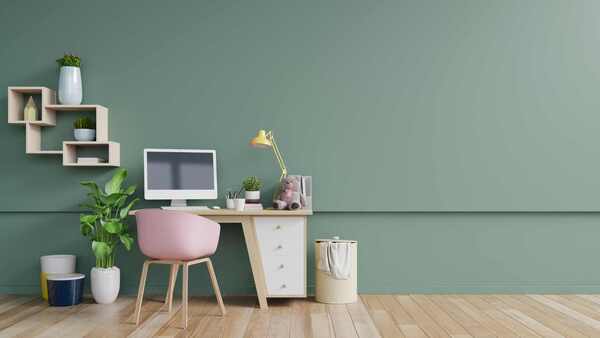Advice
Revamping Your Contemporary Office Space: Avoid These Common Mistakes
Thursday, March 28, 2024

How To Design Your Contemporary Office Space
Designing a contemporary office space is a complex task that requires careful consideration of various elements – from functionality, such as storage and lighting, to ensuring the design aligns with your brand's identity. This comprehensive guide discusses some prevalent mistakes in office space planning and how to avoid them, especially when incorporating contemporary office furniture.
Balancing Privacy and Openness in a Contemporary Office Space
One of the most prevalent errors in modern office design is failing to accommodate various work styles and preferences. A well-planned office should offer a balance between open spaces that encourage collaboration and private areas for focused work. Utilising office booths, work pods, and even telephone booths can provide employees with options to select their preferred work environment. This balance is crucial in catering to the diverse needs of a team, enhancing overall productivity and job satisfaction.
Ergonomic Considerations
Overlooking the principles of ergonomics is a significant mistake in office design. Furniture and workspace layout should be designed with the human body in mind, considering factors like posture, eye strain, and the option to alternate between sitting and standing. Ergonomically designed furniture, such as adjustable desks and chairs, can greatly improve comfort and reduce the risk of work-related injuries. Standing desks, for example, offer health benefits like reducing the risk of obesity and cardiovascular issues and can improve overall energy levels.
Acoustic Management and Collaborative Spaces
Neglecting acoustic planning can severely hinder productivity in an office. In a contemporary workspace, it is essential to incorporate furniture that supports both collaborative and individual work without causing noise disturbances. This can include office pods for quiet, focused work, and soundproofing elements in furniture and design to maintain a harmonious work environment.
Optimising Lighting For Your Contemporary Office Space
Inadequate lighting in an office can lead to decreased energy, concentration issues, and overall poorer well-being and productivity. Effective office design includes a combination of natural light and adjustable artificial lighting solutions. Task-specific lighting and ambient light can be strategically used to create an environment that is conducive to both well-being and productivity.
Overlooking Storage Solutions
Underestimating the need for adequate storage solutions is a standard error in office space planning. Adequate storage options help maintain an organised and efficient workspace. Investing in smart storage and cabinet solutions minimises clutter and streamlines the process of finding and storing items, thus enhancing operational efficiency.
Future-Proofing Your Space
Focusing solely on the current needs without considering future growth can lead to costly redesigns and disruptions. An effective office design should be scalable, taking into account potential changes in staff numbers, technological advancements, and spatial requirements over the next several years. Designing with flexibility and scalability in mind ensures that the office space can adapt as the business grows.
Integrating Nature in the Contemporary Office Space
Overlooking the inclusion of biophilic design elements can negatively impact employee health and productivity. Incorporating natural elements such as plants, maximising natural light, and providing views of the outdoors can significantly enhance the work environment. Biophilic design is known to improve mental well-being, reduce stress, and increase productivity and creativity.
Involving Employees in the Design Process
Not involving employees in the design process of their workspace is a missed opportunity. Since they are the primary users of the space, their insights can be invaluable in creating an environment that meets their needs and preferences. Involving employees in the design process can also foster a sense of ownership and ease the transition to new or redesigned office spaces.
Integrating Technology Effectively
In today’s digital age, failing to effectively integrate technology into office design can hinder productivity. Modern office spaces must cater to technological needs, ensuring there are sufficient power outlets, reliable internet connectivity, and spaces designed for digital collaboration. This integration should be seamless and intuitive, enabling employees to work efficiently in a technologically enabled environment.
These Articles May Also Interest You:
Updating Your Home Office for Winter with Recycled Business
Furniture Desk Organisation Tips for Maximising Your Intimate Office Space
Creating Instagrammable Workspaces: Office Design Trends in the UK
Contemporary Office Space Planning with Recycled Business Furniture
When planning your office layout, selecting the right furniture is crucial. Recycled Business Furniture offers a diverse range of high-quality, contemporary office furniture ideal for modern office spaces. Whether it's collaborative seating solutions, breakroom furniture, or acoustic pods, our selection is tailored to meet the needs of a contemporary workplace.
With our extensive experience in office space planning, we provide comprehensive fit-out, refurbishment, and installation services. Contact us via email or phone to learn more about how Recycled Business Furniture can enhance your office design. Let's create an office space that not only looks great but also fosters productivity and well-being.